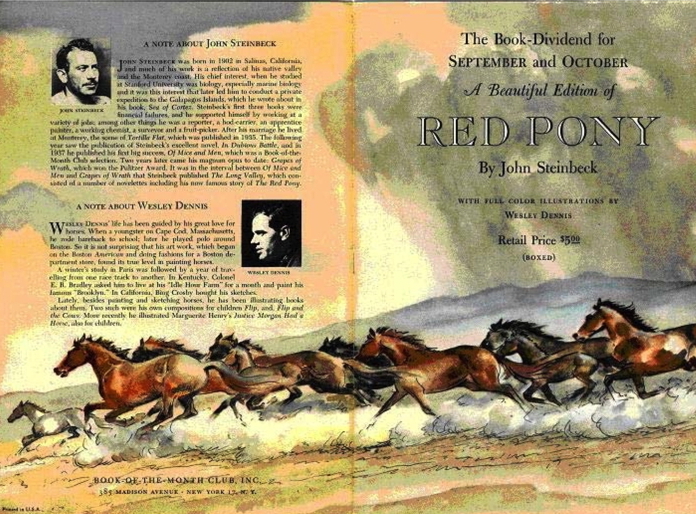
BOMC flier for Sep-Oct 1945
COLLECTING THE RED PONY
A Low-Budget Steinbeck Quest
by Don Swaim
_________________________
For book lovers of a certain age there was a day when wallets were thin and the numbers of second-hand bookshops were thick -- while John Steinbeck's most popular books were ready for the plucking. Not the least of these books was the illustrated edition of The Red Pony (1945). Who knew (or cared) about variants, points, bindings, or deboss marks (those compromising book-club dots on the rear cover)? The plethora of illustrated Red Ponies was the result of its availability as a Book-Of-The-Month-Club dividend, a fact born out by the late Steinbeck collector Phil Ralls in his definitive entry in Volume II, Number 4, of The Steinbeck Collectors Gazette, April 2007 (which this essay adds to but does not supersede). In addition, it was a book for all ages so many copies wound up in the libraries of young people. A 1949 film version, starring Robert Mitchum, Myrna Loy, and Peter Miles (enhanced by a score by Aaron Copland), solidified the book's reputation. The novella was also adapted in 1973 as a TV film, which starred Henry Fonda and Maureen O'Hara.
 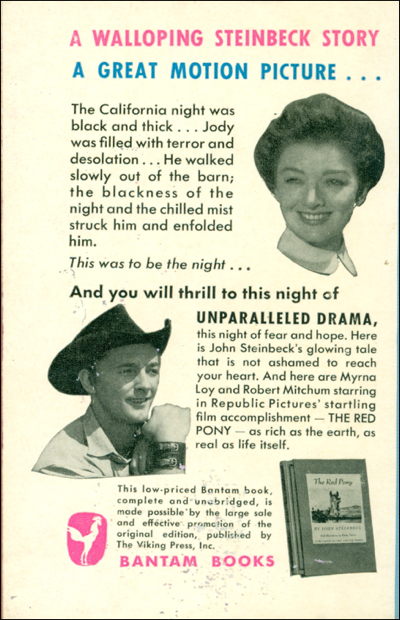
First edition Bantam paperback, August 1948. Movie tie-in with pictures of Robert Mitchum,
Myrna Loy, and Peter Miles. On rear is an image of the hardcover illustrated edition.
The story is about a California boy named Jody Tiflin, Jody's rancher father Carl, the hired man Billy Buck, and a pony named Gabilan. As Jody approaches adolescence he confronts the realities of life, death, and becoming a man.
The illustrated Red Pony is a beautiful book published by the Viking Press in beige cloth and issued in a slipcase with stunning art by Wesley Dennis (1903-1966), a high-school dropout from New England who specialized in sketching and painting horses. Dennis illustrated some 150 books, including Misty of Chincoteague, Black Beauty, and Stormy. Steinbeck's novella (actually composed of three short stories that had first appeared in magazines: "The Gift," "The Great Mountains," and "The Promise") was originally published by Covici Friede in 1937 in a signed, limited edition of 699 copies with a slipcase (as well as a signed, lettered edition of twenty-six copies). A fourth story, "The Leader of the People," which was not in the original book, was added to the illustrated edition, which alone renders it a first. There is no price on the book but it originally sold for $5.00 -- as we know from the Book-of-the-Month Club brochure for September/October 1945 [see above]. My copy of The Wayward Bus, published in 1947, advertises on its dust-jacket flap the illustrated Red Pony at $5.00. (The Wayward Bus's price itself was $2.75.)

[1] Kipe Offset Process Company variant in coarse beige cloth.
A dedicated collector might pay many thousands of dollars for the rare true 1937 first of The Red Pony, so the illustrated edition is a decent option, particularly if the collector seeks all the known variants -- at least three. If there are additional issues of this book, it's out of the scope of this essay. Even among the known variants, there may be subtle differences, as the chart below suggests. I'm not sure it was widely known about the variants until the 1974 Goldstone-Payne catalogue, which listed two. Then the Bradford Morrow catalogue in 1980 cited a third variant. Oddly, this third variant is considered to be the first issue (although I'm not sure why), and is by far the most elusive of the three.
As I made the rounds of the second-hand bookstores, so many years would pass that I'd inevitably forget how to identify the variants (and which ones I had), so I finally wrote them out on a slip of paper that I kept folded in my wallet. After acquiring the two variants listed in Goldstone-Payne, the missing third Kipe Offset issue occupied my attention off and on for perhaps twenty years -- until I at last ran across it, although it lacked the slipcase, in a used bookshop near Philadelphia.
While the variants look much the same, they were printed by three different printers. It breaks down this way:
Variant #1. Printed by Zeese Wilkinson Company and bound by H. Wolff Manufacturing Company (Goldstone-Payne A9c)
Variant #2. Printed by Rogers-Kellogg-Stillson, Inc. and bound by Kingsport Press Inc. (Goldstone-Payne A9c)
Variant #3. Printed by Kipe Offset Process Company and bound by H. Wolff Manufacturing Company (not listed in Goldstone-Payne, but is cited in Morrow)
Variants #1 (Zeese Wilkinson) and #2 (Rogers-Kellogg-Stillson) are bound in fine beige cloth; however; variant #3 (Kipe Offset) is bound in a much coarser beige cloth. It also has a point that separates it from the other two issues: the Kipe Offset variant contains a large dot over the letter "e" in the word "The" on page 129. None of the variants on my shelf has the dreaded BOMC deboss dot on the back. I understand from the particulars by Phil Ralls that the more rare Kipe Offset variant came in a blue-green slipcase, while the slipcases for the other variants were in tan.
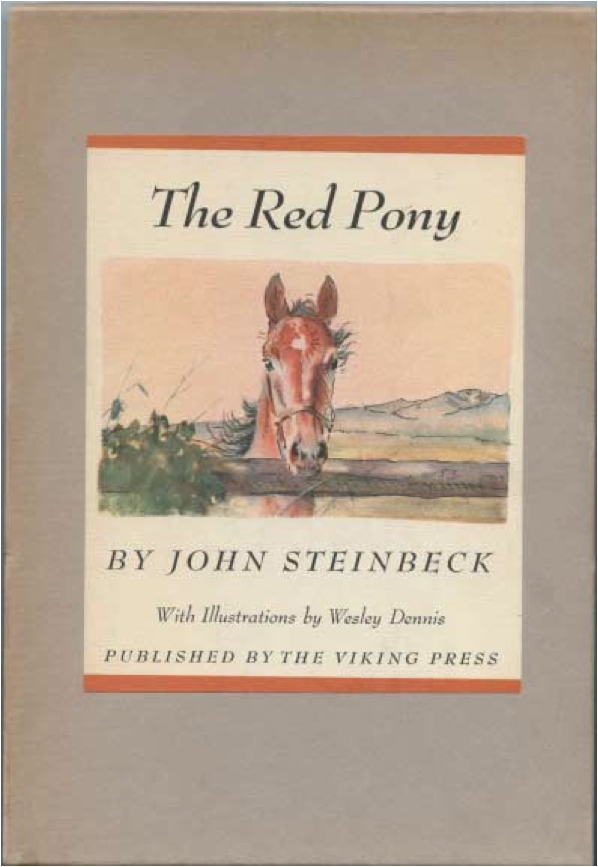
[2] The most common tan slipcase.
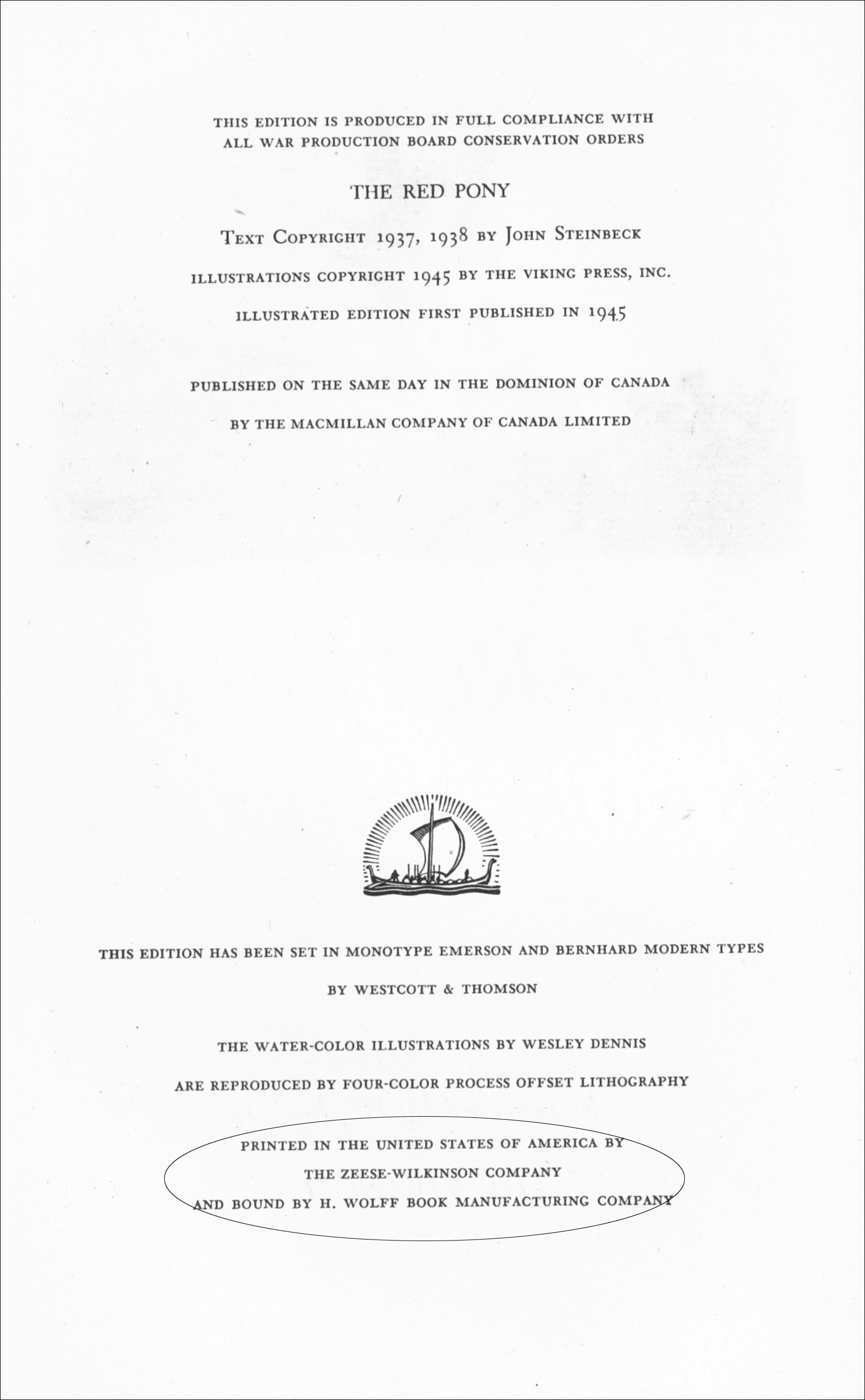
[3] The most common Zeese-Wilkinson variant.
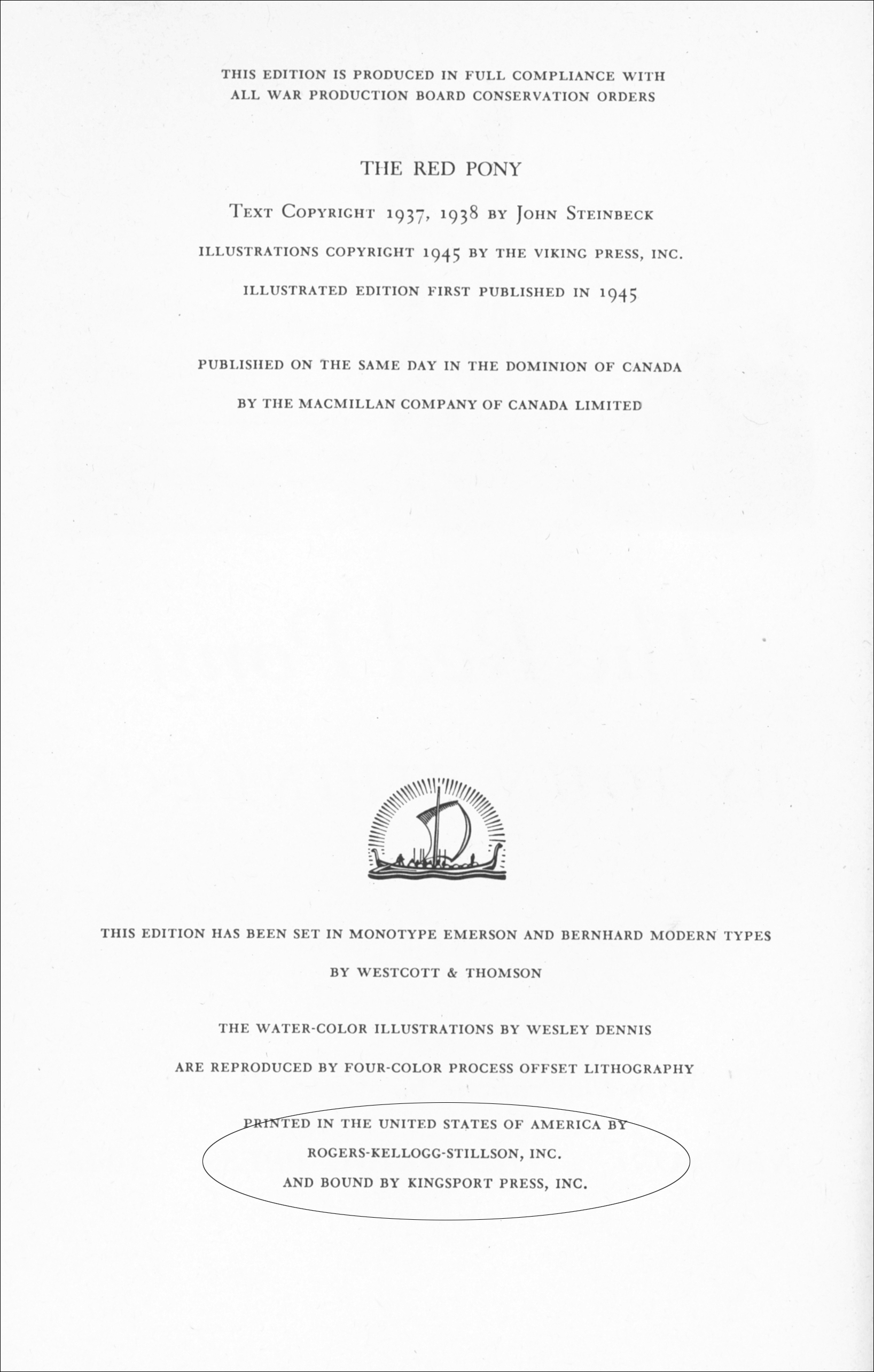
[4] The Rogers-Kellogg-Stillson variant.
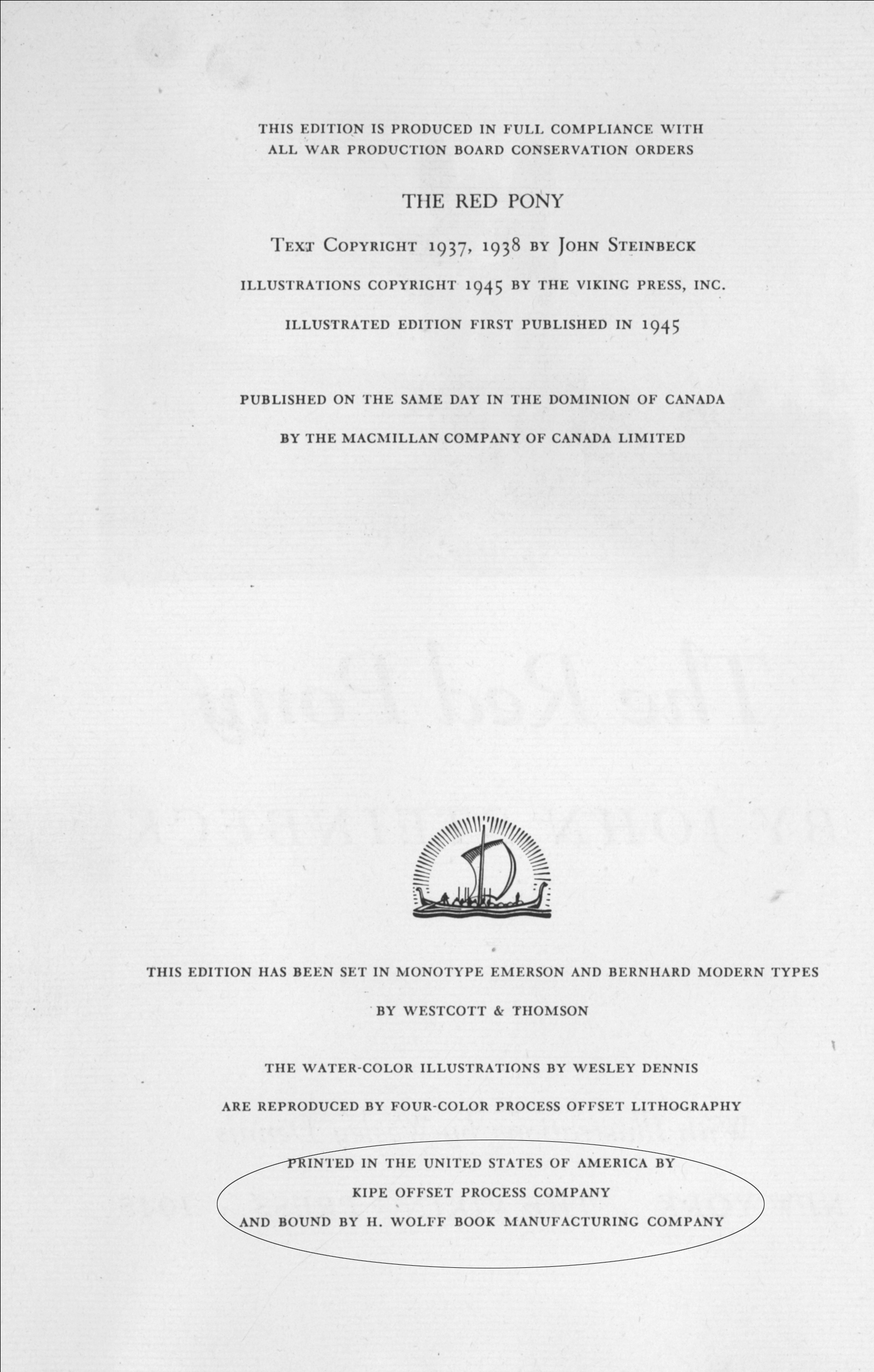
[5] The least common Kipe Offset variant, thought to be the first issue,
which contains the errant dot.

[6] The Kipe Offset issue, in addition to the rougher cloth binding,
has an errant
dot in the word "The" on the first line of page 129.
The following chart compiled by Phil Ralls, which appeared in Volume II, Number 4, of The Steinbeck Collectors Gazette, identifies the three major variants and how to identify them, along with their subtle differences:
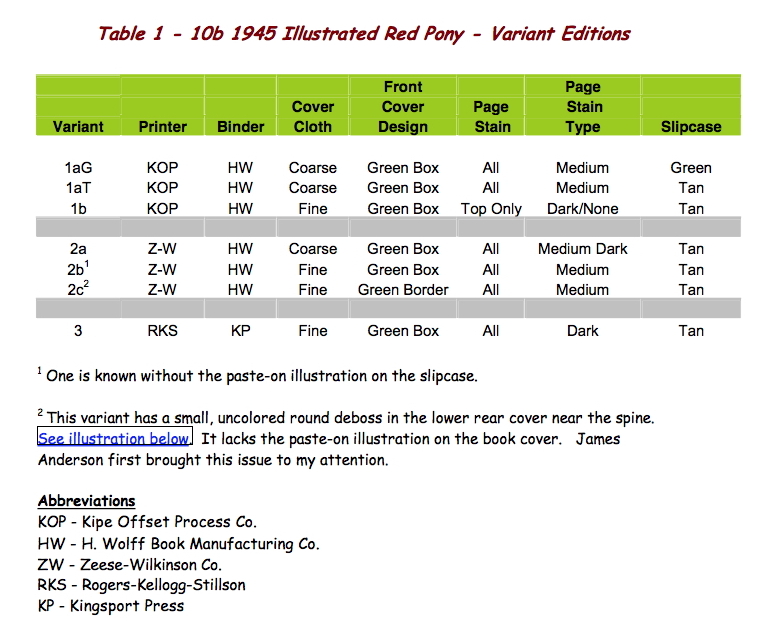
The preceding is no doubt more than most would ever want to know about the illustrated The Red Pony; however, it's a part of the syndrome described as "a gentle madness" by the bibliophile Nicholas Basbanes. Part of the joy of book collecting is in the search; otherwise, all it would take is an Internet connection, a link to ABE, and a comfortable bank account. As for the Internet, I ran a quick search and found copies of the illustrated edition ranging from a few dollars to a high of more than $3,000 for an alleged signed printing (it was for sale by a dealer who forgot to spell-check his description, which alone renders his copy suspect). My feeling is that there's little reason to spend hundreds of dollars, certainly not thousands, for this title. An online search found copies of the original Covici Friede edition [below] ranging between $1,750 and $6,432.
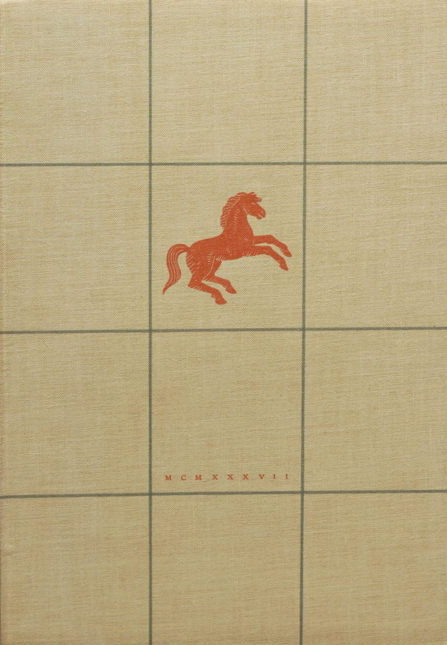
Front cover of original 1937 Covici Friede limited edition of The Red Pony.
The third variant Kipe Offset copy I purchased near Philadelphia was just $10, although the fragile slipcase was missing.My quest for the elusive Kipe Offset variant of the illustrated Red Pony took years, but it was inexpensive and ultimately rewarding. Now the challenge is in explaining to visitors why there are three apparently identical copies of The Red Pony on my Steinbeck shelves.
Wesley Dennis illustrations inside the 1945 edition:
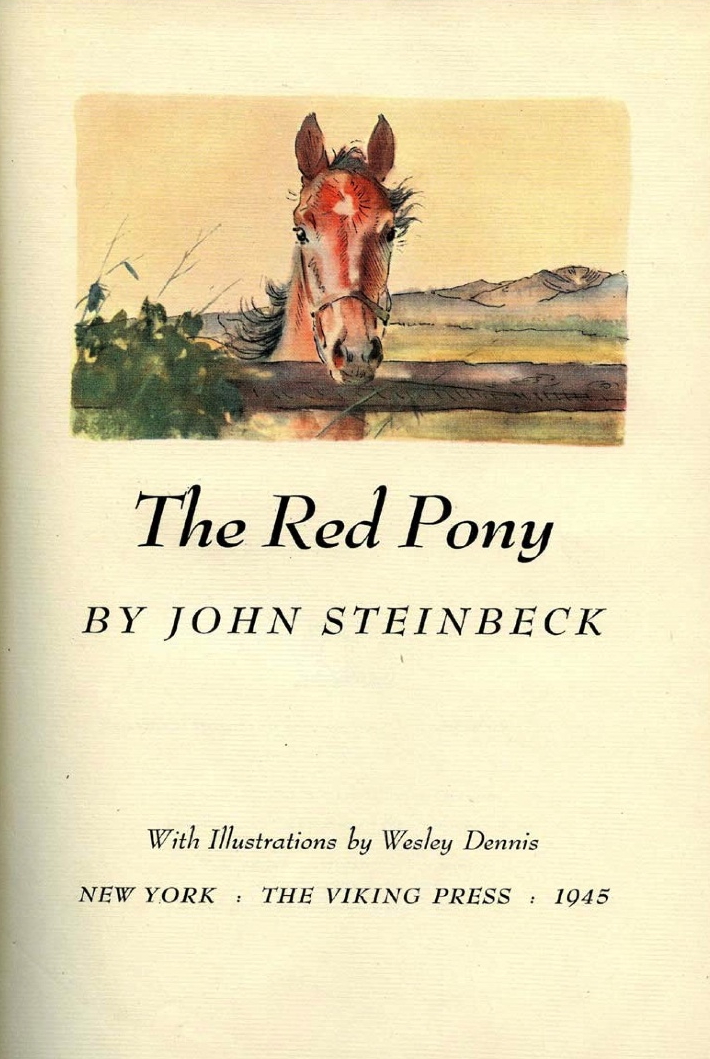
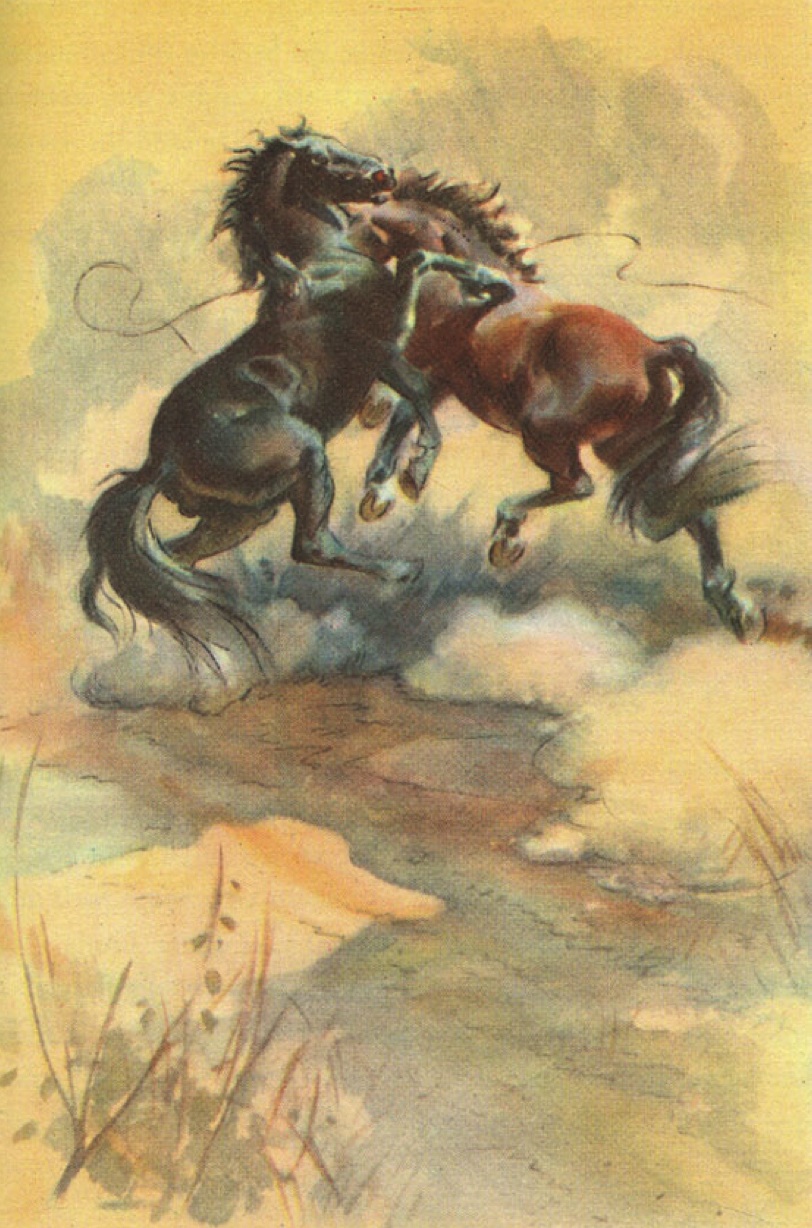
A version of this article appeared in the March 2012 edition of The Steinbeck Collectors Gazette
|

